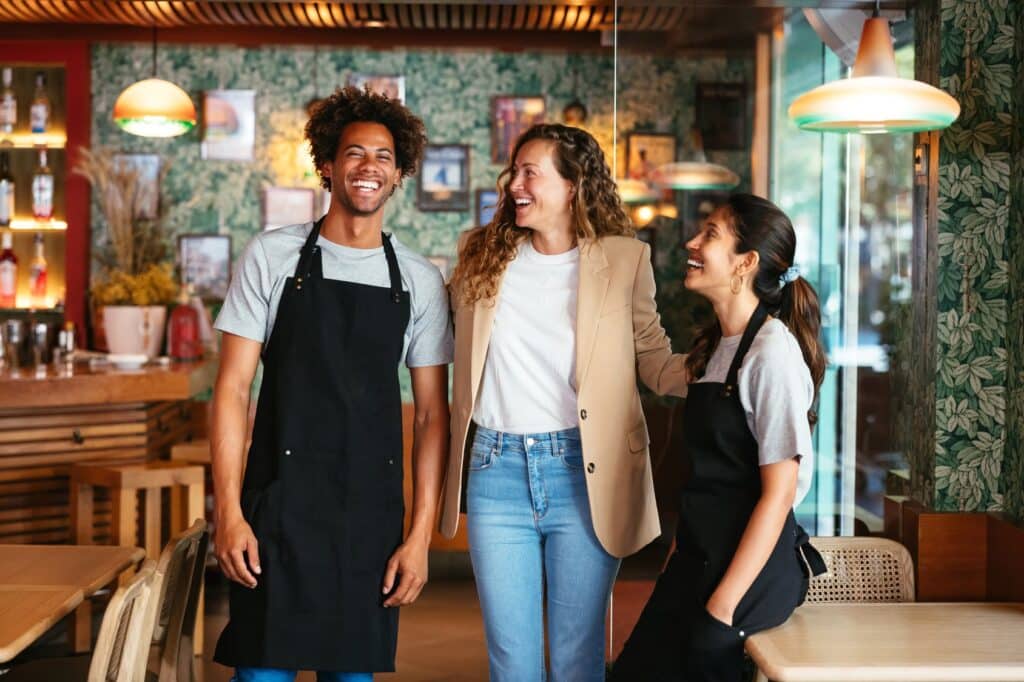While diners may take their time to savor a meal, whether that’s the first bite of a cheeseburger or an ounce of caviar, they spend far less time deciding what to eat when scanning a menu. How little time? A mere 109 seconds, according to design platform Canva. While that may seem like enough to look over your offerings, restaurant sales also follow the 80-20 rule, with the vast majority of revenue coming from a small fraction of a restaurant’s menu. For restauranteurs, that means there are only a few brief moments to entice guests to order what will hopefully not only be their favorite dish but the one that contributes the most to the bottom line.
Due to the limited time and attention diners subconsciously dedicate to choosing their next meal, it’s more important than ever that restaurant owners and operators understand and use the fundamentals of menu design. Doing so will not only contribute to sales but will boost the efficiency of the overall business and improve guests’ experiences, generating long-term profitability and growth.
Find The Golden Triangle
When designing a menu, it’s essential to know how people’s eyes and minds work. In looking at menus, websites, and other printed media, humans generally follow a pattern that allows them to quickly create an overall impression of whatever they see. First, the focus always goes to the center. From there, it bounces up to the top right corner, then to the bottom right corner, and moves diagonally across the page to get an overall gist of the menu. This creates the so-called “Golden Triangle, “your menu’s most valuable real estate, and where you should place your stars, opportunities, and other dishes that contribute significantly to your profit.
Deploy Decoys
You can also try our decoys within or near the Golden Triangle. This is a highlight, such as a box or white space, around a higher-priced item next to a lower-priced item with a higher contribution margin. Imagine a $34 filet mignon boxed alongside a $24 bavette steak. While the filet boasts a higher price, the bavette’s contribution margin is far higher due to the lower wholesale cost. By placing it next to a high-priced item, which diners often avoid or feel bad about ordering, you guide the guest toward the dish that will most benefit your bottom line.
Taste The Rainbow
When designing menus and restaurant logos, colors can affect guests’ and potential guests’ emotional and even subconscious responses. Below, find a quick rundown of how people respond to various colors:
Red: Encourages action
Yellow: Vibrant and happy
Orange: Stimulates appetite and impulsive ordering
Pink: Sweet, romantic, can be seen as unnatural and unhealthy
Blue: Calming and dulling. It’s recommended to avoid blue for anything but a seafood concept
Purple: Royal, creative, lavish
Green: Healthy and fresh
Black: Exclusive and elegant
The Price Is Right
As times change, so do restaurant trends, operations, and menus. One of the most significant and successful changes in menu design is how they deal with money. Previously, owners would list menu prices in a column along the righthand side of each page. Avoid this. It encourages diners to choose by price rather than preference. With column pricing should go the 99 cents often tagged onto prices, as well as the dollar sign, which makes guests consider price more seriously and push their desires to the side.
Write the Right Description
One of the key opportunities to influence guests to order a specific item is the description. Menu items with unique titles and descriptions see increased sales by up to 27%.
Which one of these chicken sandwich descriptions sounds more appetizing?
Fried Chicken Sandwich OR Grandma’s Famous Fried Chicken Sandwich. Nostalgia is a powerful tool that restaurants can use to boost appeal. One way to make writing descriptions easier is to add words and elements that appeal to taste, texture, preparation, geography, nostalgia, or brand.
There are, of course, two sides to every coin. Descriptions that are too long can distract, confuse, and discourage your guests from reading your entire menu. Descriptions that are too vague may also scare off risk-averse guests from trying something new.
Appeal to Touch
Great menus don’t just appeal to your guests’ appetites; they also appeal to touch. Pay attention to the size of your menus, how easy they are to handle, and their texture. If you are a high-end restaurant, you want it reflected in all areas of the guest experience, including your menu. Keep QR code menus in mind as you design your menu, as most customers now prefer contactless menus.
Separate Menus
Separate menus for entrees, desserts, and drinks keep your guests focused on their order and help your restaurant segment, organize, and upsell. Separate menus can also be useful with lower-profit items that you must continue to serve, such as a kid’s menu or offerings for guests with dietary restrictions.
Finally, remember to take time to train staff on the new menu design and which menu items are priorities. This knowledge will help them guide guests to more profitable dishes that will improve their experience and your bottom line. Because tips are based on check totals, your servers will be motivated to promote higher-cost items.
Conclusion
Redesigning a menu, including the dishes that appear on it, is an important exercise for any successful brand to ensure sustainable growth. First, use an integrated restaurant management platform that combines sales and inventory data to identify where your menu is performing well and struggling. With problem areas identified, you can then select one or a few tools and begin using them to solve those individual challenges. Perhaps you have a high-profit dish that isn’t selling well. Does it fall within the Golden Triangle? Maybe you can move it next to a higher-priced plate and highlight the two, creating a decoy. What’s important as you make these changes is to ensure you have a system that can track your sales, actual and theoretical costs, and other key metrics so you can be sure whatever changes you make are improving guest experiences, increasing your profits, and helping your restaurant concept grow.



